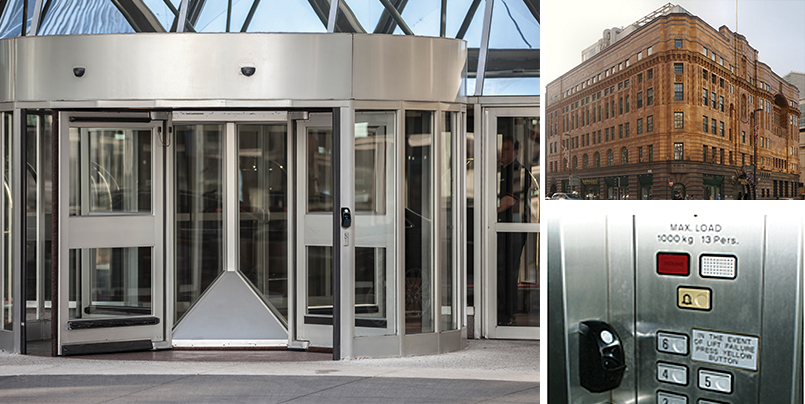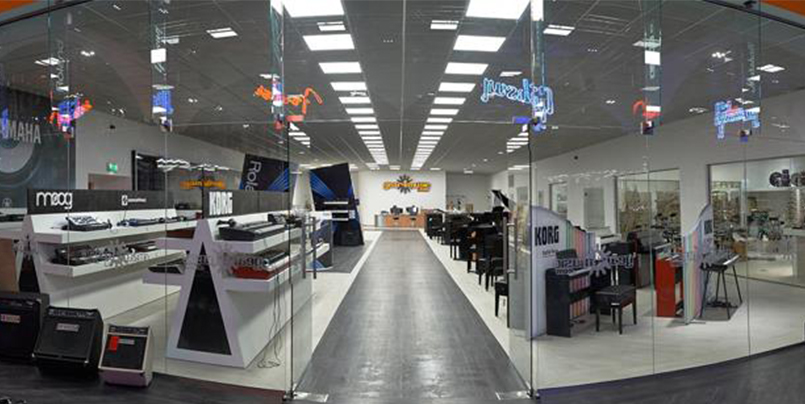
03 Jan How Corporations are Using Biometric Technology
In a survey carried out by professional IT industry network, Spiceworks, 62% of respondents’ companies are currently using some form of biometric tech. These companies have implemented biometrics for a range of purposes, from employee access and verification, to data security and password identification. The survey also indicated that 24% of respondents had a plan to implement a form of biometric technology by the year 2020.
This means that biometric technology is growing in popularity at a rapid rate, and it could be considered that the majority of businesses using it believe that it is more secure than traditional forms of authentication. The Spiceworks report also found that of the 62% of companies using biometric technology, 57% of them are using fingerprint scanning technology.
However, commonly when we think of biometric technology, we simply think of touch ID for smartphones. But corporations are increasingly harnessing the benefits of biometric technologies in many ways, to streamline processes, enhance security measures, protect data and more.
We outline some of the ways organisations, big and small, are utilising biometrics to strengthen operations.
Employee and Visitor Verification
Biometric identification serves as a far more efficient way of recording entries to an organisation. Rather than a logbook or card entry system, biometrics can ensure that access isn’t granted to anyone that it shouldn’t be by using the individual’s unique genetic makeup. This is particularly important in particular industries, such as care homes and childcare, or where highly sensitive data or valuable assets are kept.
Biometrics can be used to protect a business’s physical assets and premises, as well as computer systems and data storage. Not only does biometric technology heighten security, but a biometric identification system can also help with day-to-day operations. For example, businesses can maintain demographic data of employees, segregating by skills and departments to plan rosters more effectively.
Time and Attendance Management
Biometrics are increasingly becoming used as a form of workforce management. Using fingerprint scanners to track clock-in and clock-out times of employees is a highly-effective way to ensure accuracy in time and attendance management. This, in turn, enables far more accurate payroll management too, as organisations that pay hourly rates are able to calculate wages to the exact minute.
Membership Management
Fingerprint scanners can be used across a host of membership-based organisations, such as gyms and leisure centres, wholesalers and even universities. Many of these corporations have 24-hour access, but with restricted ‘open’ times. By using biometrics to identify those who are eligible for access at restricted times, businesses are opening their flexibility. This can enhance user experience, as your premises becomes more accessible in accordance with their schedule as opposed to the schedule of the organisation. It also reduces fraudulent errors, as members can’t ‘share’ membership access with non-members.
Data Protection
Organisations can also use biometrics to securely protect sensitive and personal data, by using the technology as an alternative to traditional username and password identification. Computer systems and data centres can be protected with fingerprint, iris or facial recognition technology to ensure only ‘keyholders’ are able to obtain access. This ensures that the data held cannot be compromised as a piece of biometric data cannot be replicated. Once a piece of biometric data is recorded, it is then ‘written’ into a template, with the original image discarded. This template is a mathematical representation of the original fingerprint or iris/face image that cannot be decrypted. Many organisations are implementing this security method to help comply with data regulations and lower the risk of cyber attack and data breach.
Financial Services
Businesses are now commonly implementing biometric technology to manage account systems and to process payments. This makes financial processes far more efficient, as users can login to the systems and authorise payments, transfers and more with one touch. This helps to reduce fraudulent payments, speed up the authorisation process and prevent criminal interception. Banks, in particular, are utilising this technology in order to identify customers and allow them to carry out transactions more securely.
How is ievo biometric technology being used?
ievo readers are used by many organisations across a huge range of industries, from care homes, nurseries and government and healthcare institutions to residential properties, fitness & leisure centres and more.
Offices:

One of Manchester’s most iconic, Grade II listed buildings, St George’s House came to ievo with the need for a more effective access control. Initially, access control was card-based, however this needed to be replaced due a lack of a computer-based server setup. Access events were previously only recorded via printout. As access events began to grow, this system just wasn’t scalable. The building decided to implement ievo readers at three access points around the building – at the server, at the reception desk and within a tenants’ suite. This system was then integrated with the lift system to only allow users access to the floors where they worked.
Retail:

In the retail space, a leading musical instrument and equipment organisation required an advanced system to log time and attendance of employees and control multiple door access. They chose to implement ievo fingerprint readers for both internal and external security. Readers were used for internal doors such as entrances to offices and a showroom, which had restricted access after 5pm. The reader systems are used for many administrative processes too, such as to calculate payroll and monitor attendance, as well as track who is in the building for improved fire safety.
These are just some of the ways biometric technology is being used by businesses across the globe. Following the publication of a recent Spiceworks report, a prediction was made that 90% of all businesses will use biometric technology in some way within the next two years, and so it’s clear that it is likely to become the standard process for authentication in the future.
Implementing biometric technology now can ensure you’re not left behind, enhancing security processes and reducing the risk of malicious attack on your organisation, whether this be physical or cyber-related.
For more information on implementing secure biometric technologies within your business, get in touch with us today.
Share this story:


